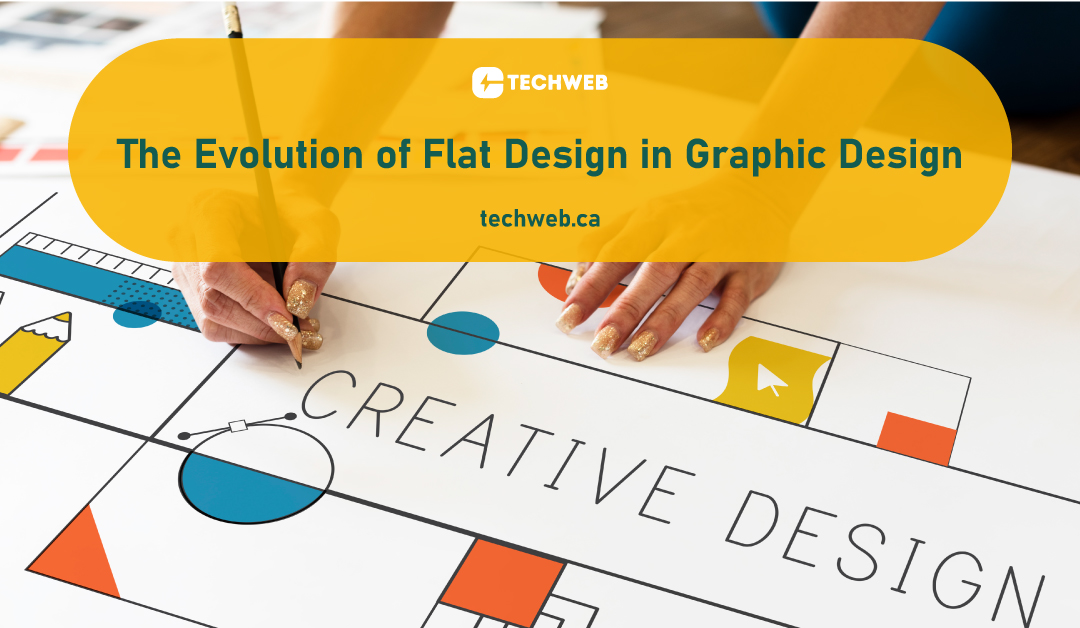The Evolution of Flat Design in Graphic Design
Graphic design is a dynamic field that constantly evolves to reflect changing aesthetic preferences, technological advancements, and design philosophies. One notable trend that has significantly shaped the visual landscape is flat design. Originating as a reaction against skeuomorphic design, flat design has undergone a fascinating evolution over the years.
In this blog, we’ll explore the journey of flat design, its defining characteristics, and its impact on the graphic design industry.
The Emergence of Flat Design
Flat design emerged in the early 2010s as a departure from the prevalent skeuomorphic design, which sought to mimic real-world textures and objects in digital interfaces. Skeuomorphism was characterized by three-dimensional elements, shadows, and realistic textures to create a sense of familiarity.
Flat design, in contrast, embraced simplicity, minimalism, and a two-dimensional aesthetic. It emphasized clarity, readability, and a focus on the essential elements of a design. The shift towards flat design was influenced by several factors, including the rise of mobile interfaces and the need for designs that translated well across various screen sizes.
Key Characteristics of Flat Design
- Simplicity: Flat design prioritizes simplicity in form and function. It strips away unnecessary embellishments, focusing on the core elements of a design.
- Two-Dimensional Elements: Flat design relies on two-dimensional elements, avoiding the use of shadows, gradients, or other three-dimensional effects.
- Bold Colors: Vibrant and bold color palettes are a hallmark of flat design. The use of bright colors enhances visual appeal and aids in creating a clean and engaging aesthetic.
- Typography Emphasis: Typography plays a crucial role in flat design. Clean and legible fonts are commonly used to convey messages without distraction.
- Minimalist Icons: Flat design often incorporates minimalist icons with simple shapes and clear symbolism. These icons are easily recognizable and contribute to a user-friendly interface.
- Grid-based Layouts: Grid systems are frequently employed in flat design to maintain consistency and alignment, contributing to an organized and cohesive visual structure.
Evolution of Flat Design
- Material Design: Introduced by Google in 2014, Material Design is an evolution of flat design that incorporates subtle shadows, depth, and responsive animations. It aims to create a sense of realism within a flat design framework.
- Neumorphism: Neumorphism, or “soft UI,” is a contemporary variation that reintroduces a subtle sense of three-dimensionality through soft shadows and highlights. It strikes a balance between the flat and skeuomorphic approaches.
- Flat 2.0: Flat 2.0 represents a refinement of traditional flat design by introducing subtle gradients, shadows, and layering. This approach maintains simplicity while adding a touch of depth for visual interest.
Impact on User Experience and Branding
- Faster Loading Times: The simplicity of flat design contributes to faster loading times, enhancing the user experience, particularly on mobile devices.
- Responsive Design: Flat design’s emphasis on simplicity and clarity makes it inherently suitable for responsive design, ensuring a consistent user experience across various devices.
- Brand Recognition: Many prominent brands have adopted flat design principles in their visual identities. Notable examples include Microsoft’s Windows logo and Apple’s iOS interface, contributing to brand recognition and modernity.
- Adaptability: Flat design’s adaptability has made it a popular choice for websites, mobile apps, and branding. Its clean and versatile aesthetic suits a variety of industries and applications.
Challenges and Criticisms
- Lack of Visual Interest: Some critics argue that flat design can lack visual interest or sophistication compared to more complex design styles.
- Usability Concerns: The absence of visual cues, such as shadows and gradients, can pose challenges in conveying hierarchy and interactive elements, potentially impacting usability.
Conclusion
The evolution of flat design in graphic design represents a paradigm shift in visual aesthetics, favoring simplicity, clarity, and adaptability. From its emergence as a reaction to skeuomorphism to its contemporary variations like Material Design and Neumorphism, flat design continues to shape the digital landscape. As graphic designers navigate the evolving design trends, the principles of flat design remain influential, contributing to user-friendly interfaces, brand identities, and a visual language that resonates in the digital age.

